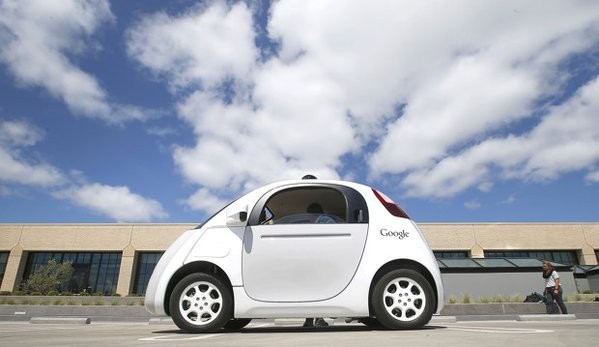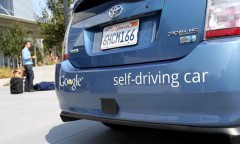By Steve Pak, | January 14, 2016

Google Self-Driving Car
Self-driving cars might become fully autonomous in the future, but human drivers are still needed behind the wheel in case there is an emergency situation. Google reports that from September 2014 to November 2015 the drivers of its autonomous vehicles took control of the robotic cars 341 times to avoid a "disengagement" event. Companies that are testing driverless cars annually report such figures to California's Department of Motor Vehicles (DMV).
Like Us on Facebook
The Golden State's DMV released reports filed by seven companies that received permission to test prototype self-driving cars on public roads, according to CBS San Francisco. On-road testing of autonomous vehicles began in September 2014.
The search giant reports that among the 341 disengagements, 272 (80 percent) were due to the failure of autonomous tech. A vehicle's computer detected a problem and then transferred control of the car to a human driver. It sent an audio/visual signal.
Google states that its main goal is not to reduce the number of engagements. Instead, the car company wants to gather data to improve its self-driving system.
Therefore, the company has a very broad definition for "engagement." This allowed the company to find small problems with sensor readings, according to The Verge.
However, the nearly 70 other disengagements were more serious. In those events the human driver had to grab the steering wheel for the safe operation of the car.
Google points out that the drivers did not always have to take control of the vehicle to prevent crashes. They can be related to the "comfort" of the driver, or bad driving from other automobiles on the road.
The Alphabet company then ran the sensors' data through a simulator. Such tests showed what would have happened if the drivers had not reached for the steering wheel.
The tech giant discovered that 13 of the 69 (19 percent) manual disengagements would have caused contact with another vehicle. In 10 of the events Google's tech was to blame, and in the other three cases other human drivers were at fault.
Experts of autonomous tech report that Google performed fairly well. However, they also pointed out that most of the testing happened in good weather, which would have caused fewer emergency cases than when driving in snow, rain, or hail.
-
Use of Coronavirus Pandemic Drones Raises Privacy Concerns: Drones Spread Fear, Local Officials Say

-
Coronavirus Hampers The Delivery Of Lockheed Martin F-35 Stealth Fighters For 2020

-
Instagram Speeds Up Plans to Add Account Memorialization Feature Due to COVID-19 Deaths

-
NASA: Perseverance Plans to Bring 'Mars Rock' to Earth in 2031

-
600 Dead And 3,000 In The Hospital as Iranians Believed Drinking High-Concentrations of Alcohol Can Cure The Coronavirus

-
600 Dead And 3,000 In The Hospital as Iranians Believed Drinking High-Concentrations of Alcohol Can Cure The Coronavirus

-
COVID-19: Doctors, Nurses Use Virtual Reality to Learn New Skills in Treating Coronavirus Patients











